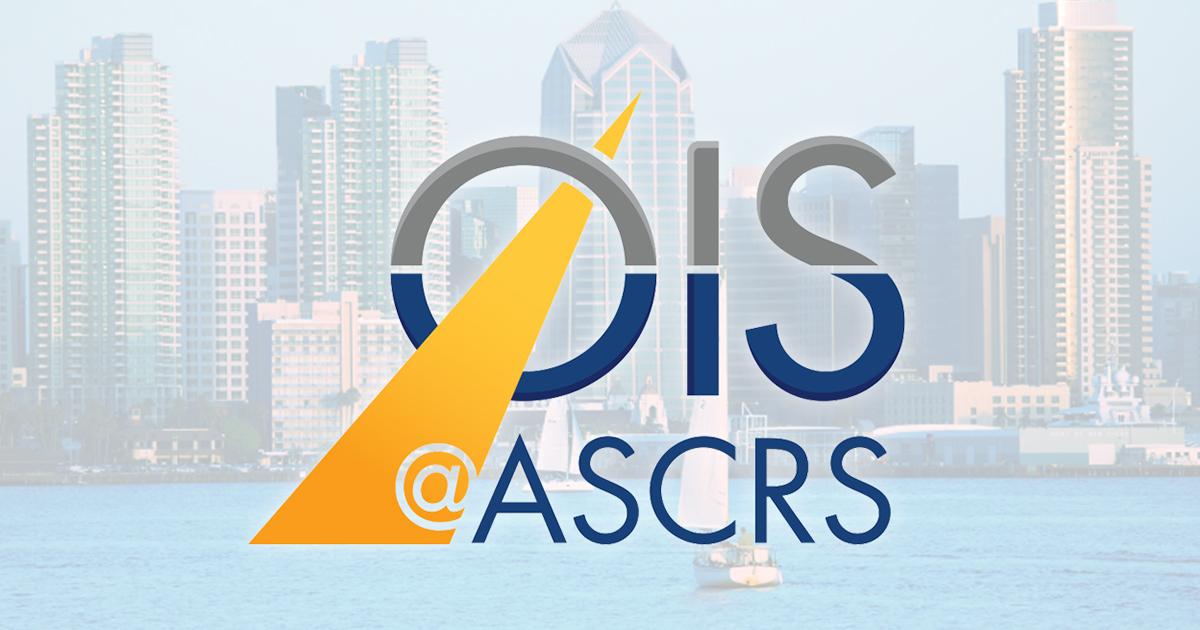A Dozen Takeaways from OIS@ASCRS 2019

Last week’s OIS@ASCRS 2019 saw a record number of registrants, and the 650 attendees were treated to a wealth of information from the presenting companies, many on the dais for the first time at an Ophthalmology Innovation Summit. Here’s an even dozen takeaways.
- Vicken Karageozian, MD, president and CEO of Allegro Ophthalmics, gave a preview of data that were presented in full a few days later at the American Society of Cataract and Refractive Surgery on the company’s human proof-of-concept clinical trial of ALG-1007 ophthalmic solution for dry eye disease. He showed a slide that demonstrated what he called a “very robust response” for nasal conjunctival staining, one of the endpoints the researchers had predefined.
- Precise Bio was one of those first-time presenters. CEO and co-founder Aryeh Batt explained that the company is bio-fabricating tissue using three-dimensional printing technology, which, he said, “essentially deposits cell by cell the structure of the tissue in the same anatomical structure as it is in the body.”
- Mina Sooch, president and CEO of Ocuphire Pharma, another first-timer, gave highlights of recent studies of Nyxol, the company’s once-daily eye drop treatment for multiple front-of-the-eye disorders. She said that testing showed the drop is durable, and can improve visual acuity and lower intraocular pressure (IOP), even though these weren’t objectives the company had hypothesized.
- Mati Therapeutics’ CEO Bob Butchofsky discussed the Evolute punctal plug delivery system. He shared new clinical data on using nepafenac with the Evolute system for pain and inflammation following cataract surgery. He said retention rates of the plug were excellent, with about 75% of patients in the treatment arm reporting no pain three days after surgery versus 38% in the placebo arm. He also said the percentage of patients with no pain throughout the entire postoperative period (through day 14) was 42% in the treatment arm, and 0% in the placebo group. Positive results were also seen in reduction of inflammation.
- Describing Dextenza as “an innovation we’ve already brought over the finish line,” Antony Mattessich, president and CEO of Ocular Therapeutix, said it’s extremely rare to have a product such as this that utilizes an entirely new route of administration. He went on to explain that not only does the drug create new reimbursement pathways, but as a “buy and bill” item, whoever buys it can take a margin on the product. It also has its own procedure code.
- Aerie Pharmaceuticals is a frequent presenter at OIS, and at this meeting president and COO Thomas Mitro discussed the company’s two commercial glaucoma drugs: Rhopressa and the just-launched Rocklatan. He presented data that showed more than 60% of patients receiving Rocklatan achieved greater than or equal to 30% mean IOP resolution at three months. He also discussed plans to expand Rhopressa, and then Rocklatan, first into Europe, and then into Japan.
- Christian Roesky, PhD, CEO and managing director of Novaliq, said the company’s EyeSol technology is a water-free drug delivery system for the eye, which is important because only 1% to 10% of a water-based topical eye medication reaches target tissue. The company has two assets based on this technology for use in dry eye disease, which he said would be ready for new drug application submission in 2021.
- Co-founder and director Curt LaBelle explained that Eyenovia utilizes a micro-dosing technology, and said the company believes micro-dosing is how all drugs should be delivered in ophthalmology. He said the eye can only hold about 8 microliters, and a typical eye drop is about 40 microliters. Eyenovia’s technology sprays a small amount of drug onto the eye in a manner similar to how a laser printer sprays ink onto paper.
- Stephen Slade, MD, discussed the RxSight light adjustable intraocular lens, and said he’ll be incorporating it into his practice. The lens is placed in a standard manner during cataract surgery, but then a few weeks later the IOL power can be adjusted with a light beam according to the patient’s needs.
- William Trattler, MD, suggested a path to innovation may exist by keeping the capsular bag in the front of the eye open. He said the Gemini refractive capsule by Omega Ophthalmics has a 3D design so when it’s placed in the capsular bag, it fills the space of a natural lens. The area inside can be used for an IOL, but can also be useful for drug delivery and biometric sensors.
- Avedro CMO Rajesh Rajpal, MD, presented information about the PiXL, (photorefractive intrastromal cross-linking) technique, a non-invasive treatment for presbyopia that doesn’t require incisions or ablation of tissue. It instead uses drops, UV light, and oxygen. More than 200 PiXL treatments have been done internationally. Dr. Rajpal said early clinical results have been promising, and the company will begin a multicenter Phase II study this year.
- John Vukich, MD, director of the refractive surgery service at the Dean Clinic in Madison, WI, said Clerio Vision’s LIRIC (Laser Induced Refractive Index Change) platform for refractive error correction is a revolutionary concept. He explained that instead of re-shaping the cornea, as is done in LASIK, photorefractive keratectomy, and SMILE procedures, LIRIC leaves the shape of the cornea unchanged, but instead changes the refractive index in a very thin layer of the cornea. The method will also have applications for use with IOLs and contact lenses, Dr. Vukich said.
For questions about this article, please contact Steve Lenier at steve@healthegy.com.
